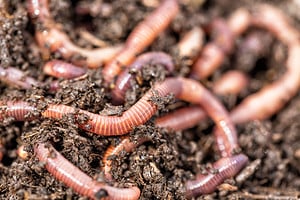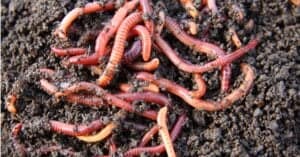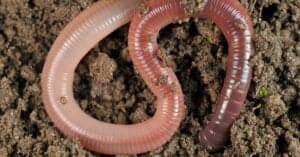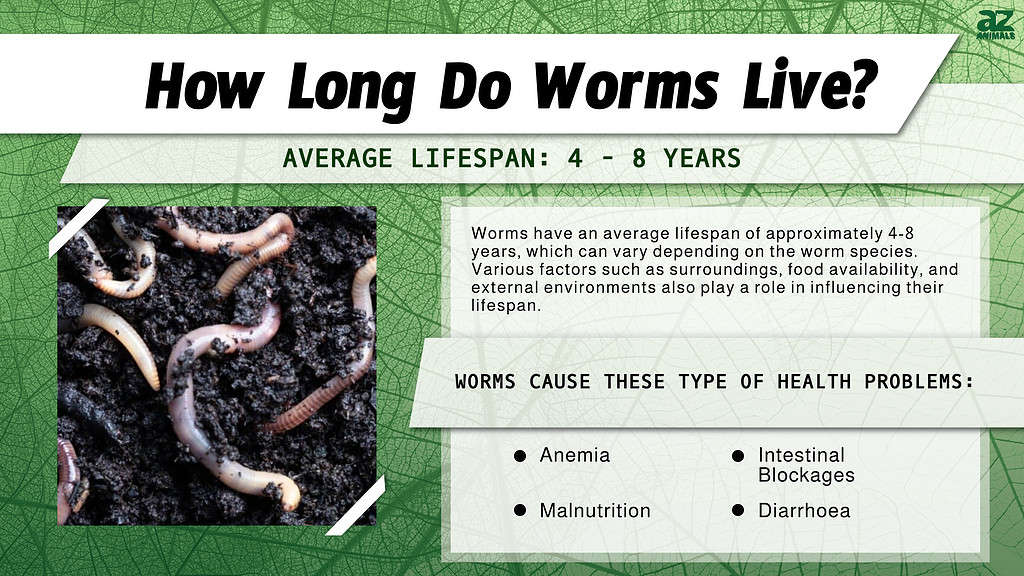
There are many different kinds of worms in the world. We are more familiar with the worms we find in our backyards or while digging in the dirt. But we don’t often consider just how amazing this species is.
If you love learning about cool new animal facts, you’re in the right place. We’ve got the rundown on worms, including the average worm lifespan and other fun facts that’ll make you a worm expert!
Quick Crash Course On Worms
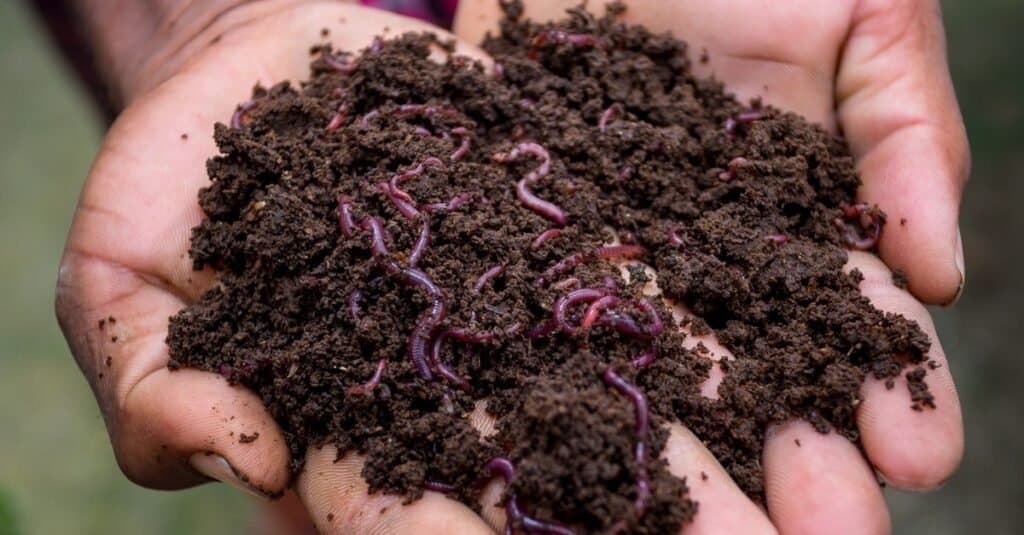
Earthworms strive to make a decision and migrate in the same direction as a group.
©Jahangir Alam Onuchcha/Shutterstock.com
Worms are a group of closely related bilateral animals. They have bodies shaped like cylindrical tubes without limbs and eyes. They come in a variety of shapes and sizes. Some worms dwell on land, while others live in marine or freshwater habitats. Worms are also found underground. This is because many of them burrow.
The most commonly recognized worm is the earthworm, as there are over 2,700 different species on the planet. Earthworms are fascinating animals, as they can replace or replicate missing segments of their bodies. However, this ability varies widely. This is based on the worm type, the amount of damage done to the worm, and where it is sliced. It may be simple for a worm to replace its tail, but it may be harder to replace its head if it has been cut off.
Worms may dwell in any damp soil with decaying plant debris. They can also be found in most of the rich rainforest regions, as well as inland and freshwater.
With all of this worm knowledge, let’s gain a better understanding of worm lifespan and what factors influence how long they can live.
How Long Do Worms Live?
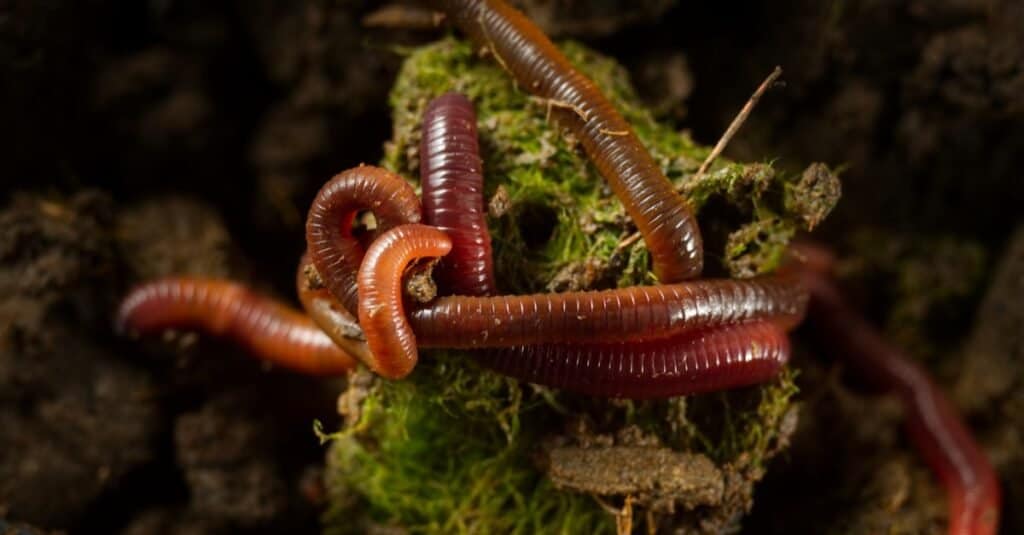
Worms breathe through their skin, which is helped by the mucus layer that they produce.
©Witaya Proadtayakogool/Shutterstock.com
The average worm lifespan is around 4-8 years, depending on the species of worm. There are also several other factors that impact their lifespan, which include surroundings, food, and other external environments.
Let’s take a look at the average lifespan of worms across different species:
- Earthworms: The average earthworm lifespan is between 4-8 years.
- Nematodes: Roundworms, also known as nematodes, are also invertebrate animals classified as worms. They typically live around 20 days and have an incredibly short lifespan compared to other species.
- Flatworm: Although not fully reliable based on a lack of research, the average flatworm lifespan is anywhere between 65-120 days.
Roundworms, in particular, have become the subject of extensive research on lifespan and longevity. Several previous research has used medications or genetic engineering to enhance the lifetime of C. elegans by 50 or 100 percent. Researchers have found that mutations in the insulin-like signaling system, in particular, lengthen adult longevity in this roundworm. These are related to the up-regulation of stress response genes, especially for heat shock proteins (HSPs). This indicates that insulin-like regulation of molecular chaperones influences lifespan.
According to the researchers, this discovery may help explain why no one gene confers a longer life in humans. There might be a variety of combinations that assist different people in staying healthier for extended periods of time.
The Average Worm Life Cycle
Now that we better understand the worm lifespan, let’s explore how these creepy crawlers grow!
We’ll take a look at the earthworm life cycle in particular, as they are the most extensive worm type. The average worm life cycle is broken into five specific stages. Let’s take a look at each stage in detail.
Reproduction
Two earthworms are involved in sexual reproduction. The two earthworms create a slime tunnel and use the tubercula pubertatis to clasp one other. Because both earthworms assume the roles of a male and a female during sexual reproduction, they are referred to as simultaneous hermaphrodites. The earthworms then separate after this exchange.
Some earthworm species are capable of asexual reproduction. Parthenogenesis is the process through which a single earthworm produces offspring from unfertilized eggs.
Cocoon
The cocoon is delicate in the beginning. However, after being buried deep in the soil, it will turn somewhat amber and leather-like. The cocoon will eventually acquire resilience to drying and injury. Cocoons are the size of a lemon and have an extraordinarily tiny size. Each cocoon contains one to twenty fertilized ova or eggs, allowing them to remain underground until the conditions are favorable for hatching.
Hatchlings
Even if a cocoon can accommodate up to 20 baby earthworms, only a few will emerge to grow into adults. The young worms resemble adults of their species, with the exception that they are only approximately a half-inch long and white. They are not fostered by their parents and will begin to feed as soon as they emerge from the cocoon. In fact, a worm may consume its weight in food every day.
Adult
When earthworms reach adulthood, which can take four to six weeks, they are mature enough to procreate, and the cycle begins again. Worms may generate anything from 3 to 80 cocoons every year and will continue to do so as long as there is a sperm supply.
What Factors Impact The Worm Lifespan
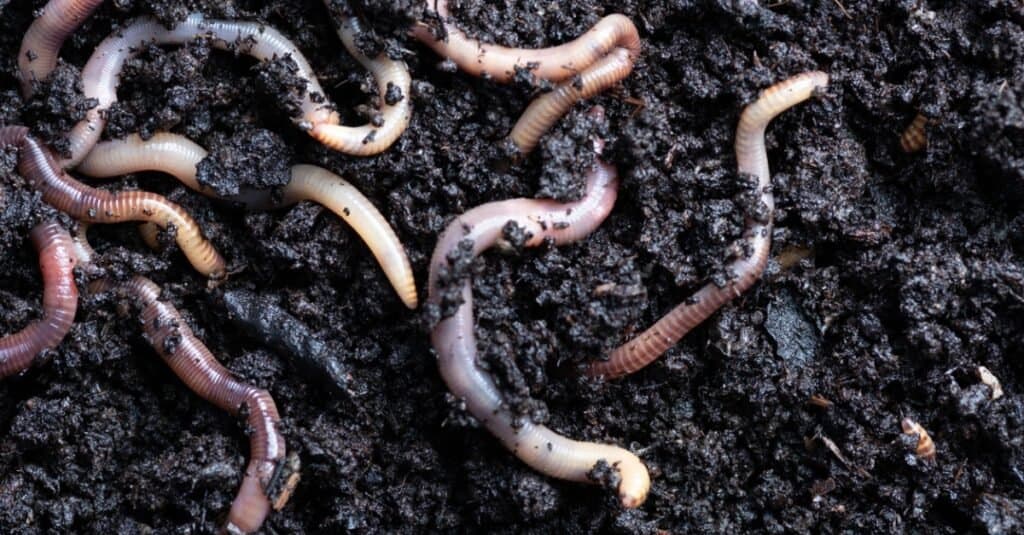
Worms are preyed on by birds, moles, voles, snakes, fish, and people.
©iStock.com/Steve Jones
As such a small species of animals, it’s surprising to find that some species of worms even live as long as they do. Worms are hunted by many other animals. This is because they are a relatively small and defenseless species. Many animals prey on worms as a source of food.
Their main predators include:
- Carnivores of Small Size: When earthworms emerge from the ground, various tiny predators dine on them. This includes weasels, stoats, otters, mink, and frogs.
- Birds: Worms are eaten by nearly all tiny and medium-sized birds. Throughout the planet, worms make up a significant portion of a bird’s meals.
- Reptiles and Amphibians: The eastern worm snake is only one of the snake species that eats earthworms. Turtles will also consume them as they forage. Centipedes and toads also enjoy eating worms as well.
The photo featured at the top of this post is © iStock.com/Christian Dahlhaus
Thank you for reading! Have some feedback for us? Contact the AZ Animals editorial team.




